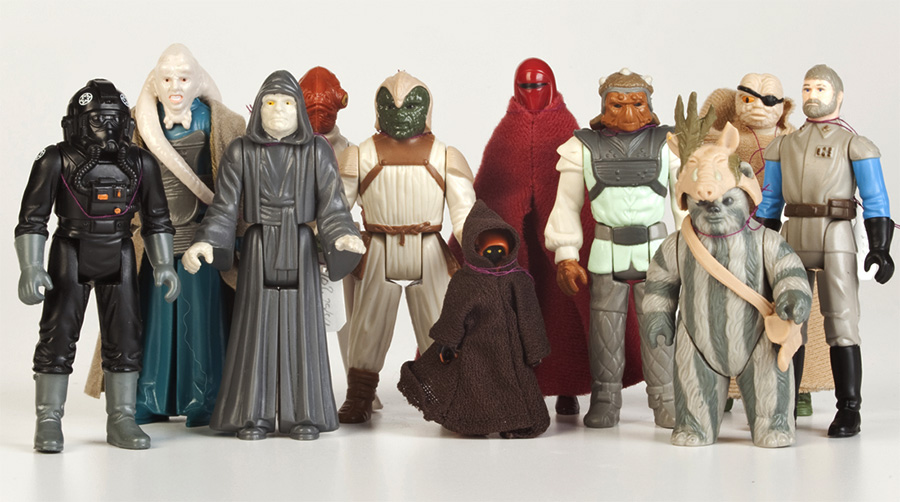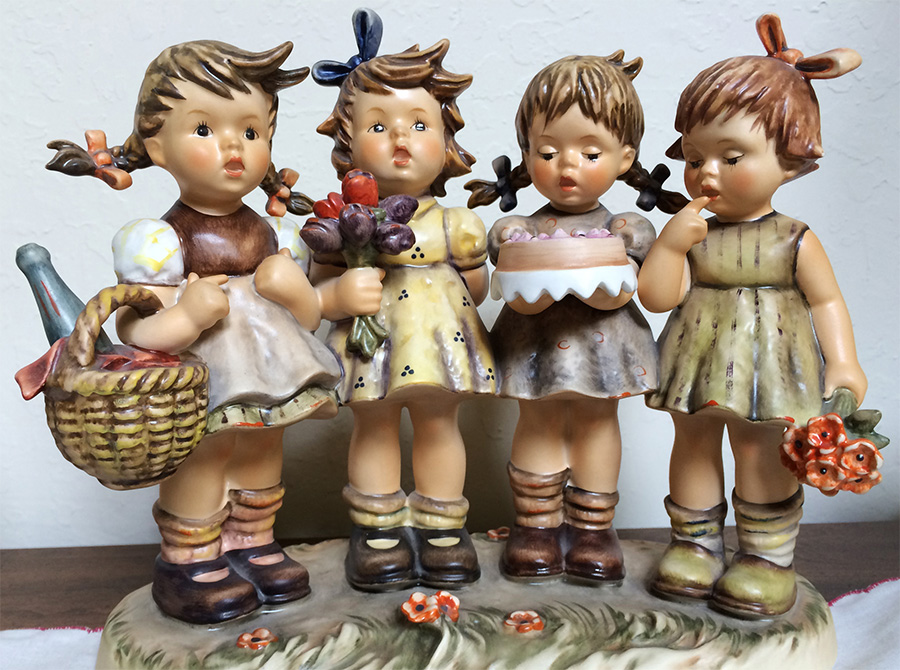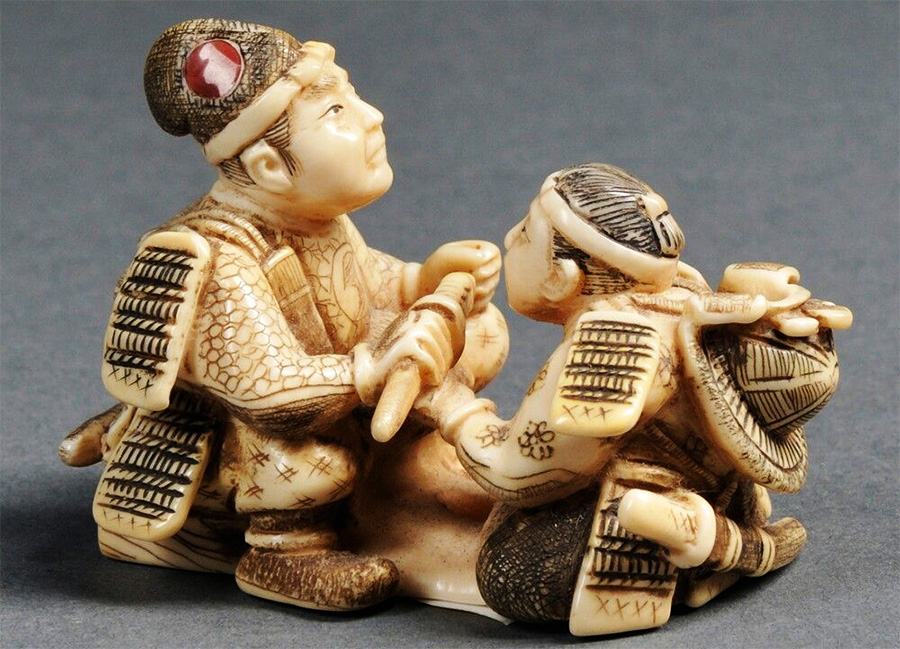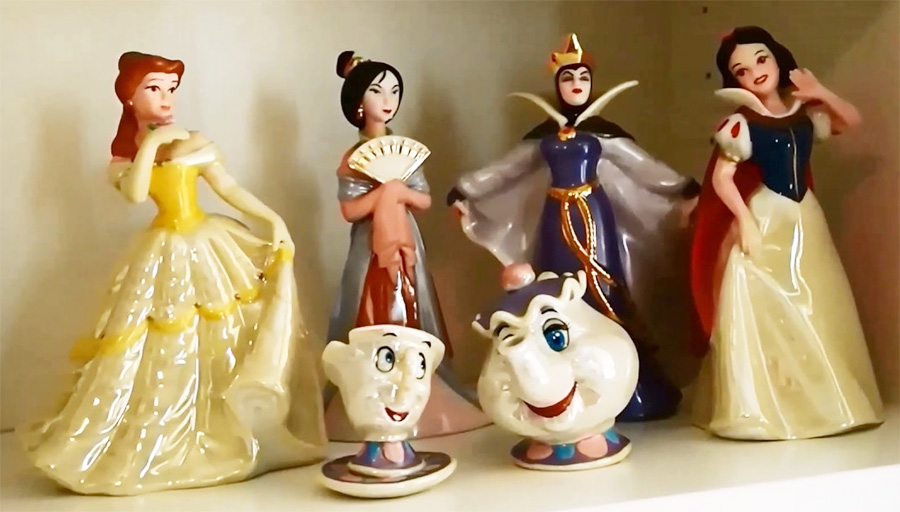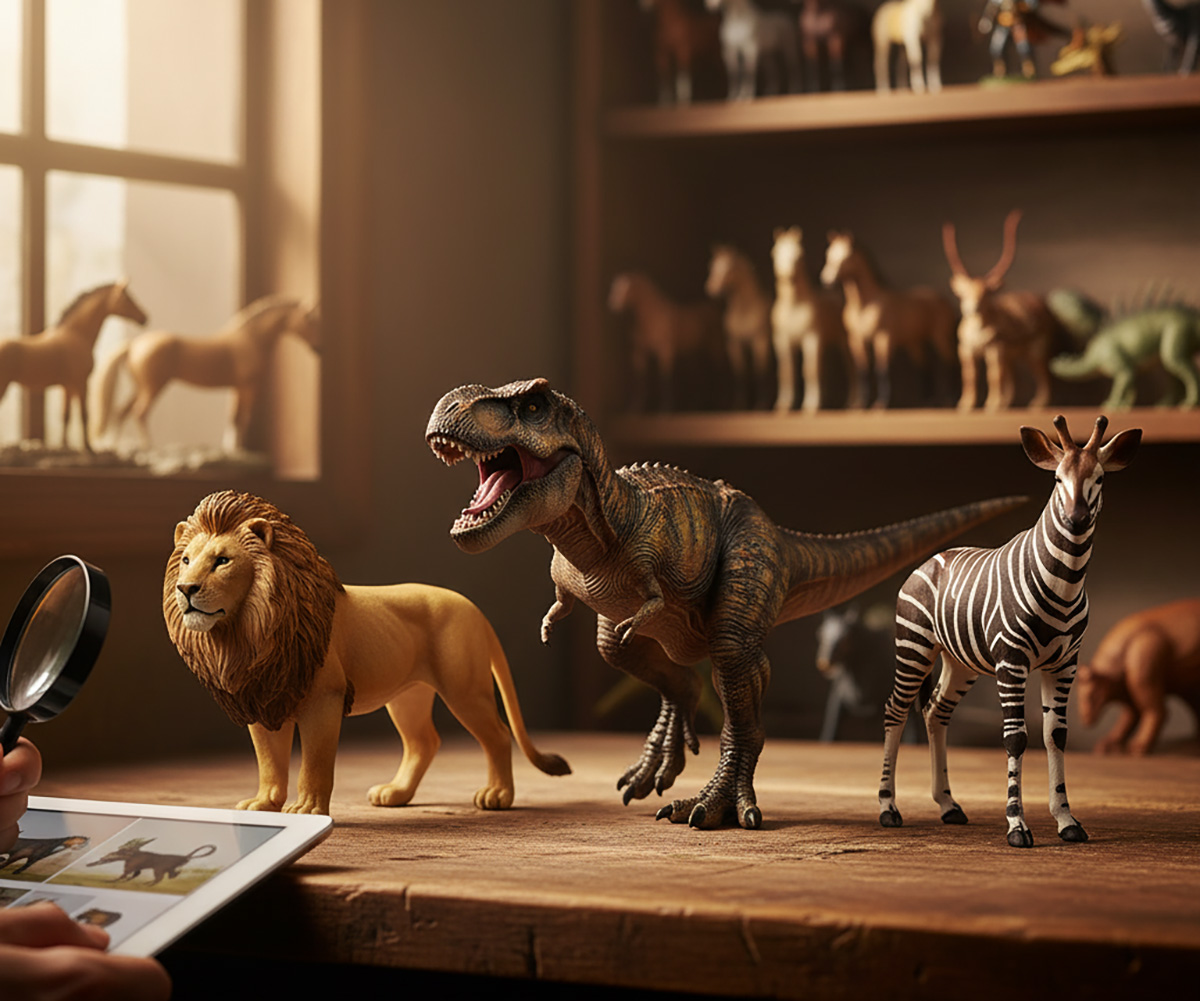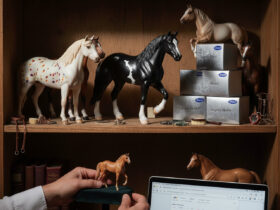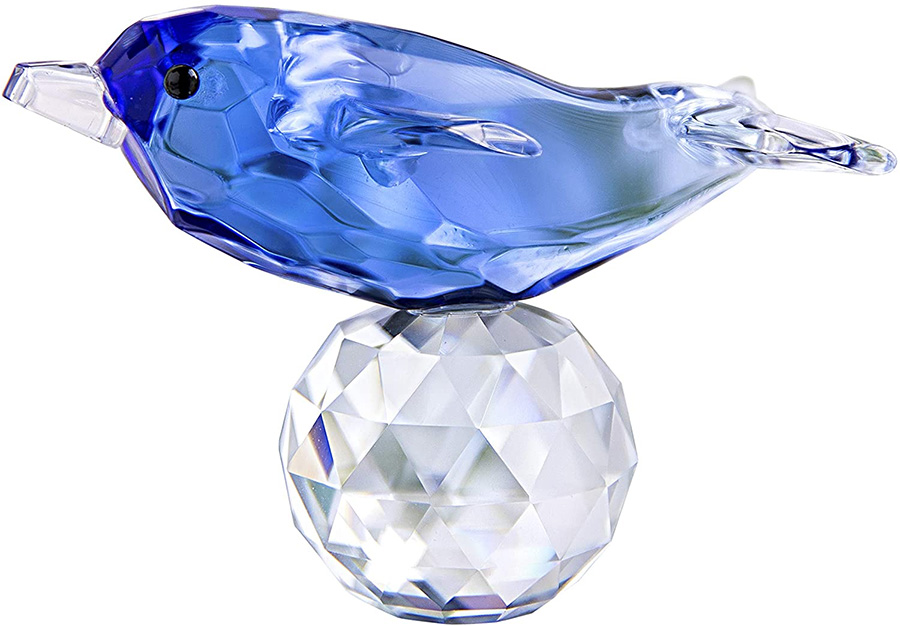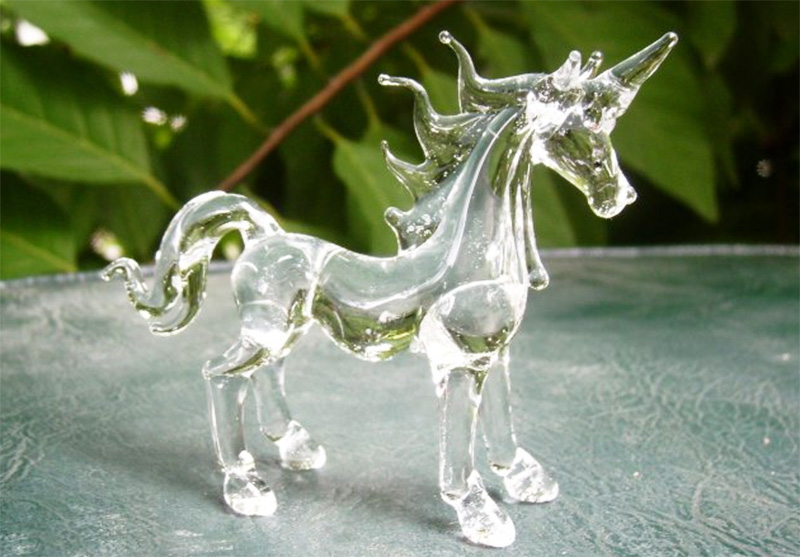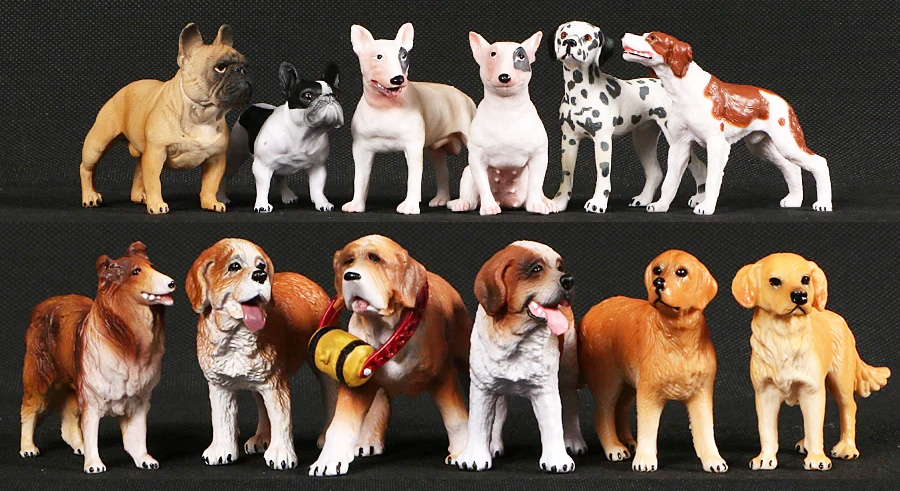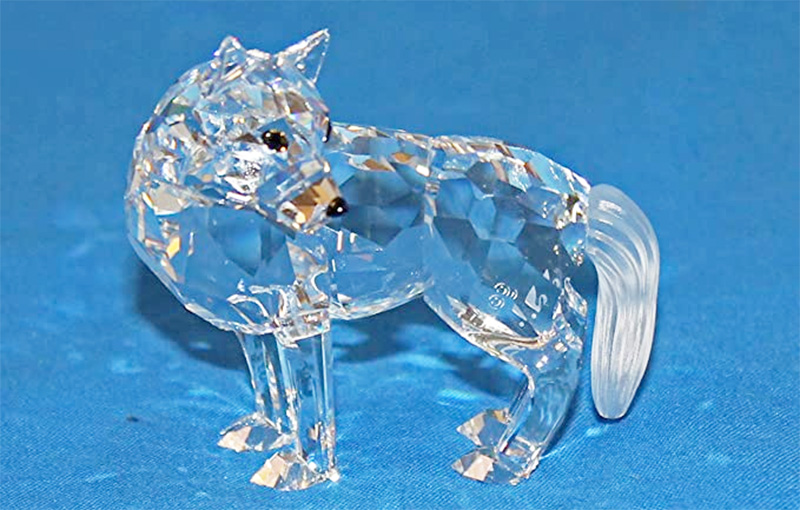Which Realistic Animal Figurine Brand is Best for Collectors?
You know the moment. You’re in a toy store, or more likely, scrolling through a hobby website. You’re on the hunt. You’re looking for a lion, or a specific horse breed, or that one dinosaur that’s captured your imagination. And there they are, lined up: the “Big Three.”
On one side, you have the solid, familiar form of a Schleich. You know it. You trust it. It feels heavy. In the middle, a Papo catches your eye. It’s snarling, coiled, captured in a moment of dramatic, heart-pounding action. And then, off to the side, is the CollectA. You might not even recognize the species—a Thylacine, a Fossa, a Przewalski’s Horse. It looks like it walked straight out of a zoology textbook.
To a parent, they might all look like “plastic animals.” But to a collector, they are worlds apart.
This isn’t just about toys. It’s about miniature sculptures. It’s about building a world on your shelf, a museum in miniature, a snapshot of the natural world. But with budgets and shelf space being finite, a choice has to be made. Which brand deserves your loyalty?
We’re about to put them to the test. This is the collector’s deep-dive into Schleich vs. Papo vs. CollectA. We’re going beyond “play value” and digging into the criteria that really matter to us: sculpting, paint, variety, scale, and long-term collectibility.
Section 1: Meet the Contenders – The Philosophies of the “Big Three”
Before we compare them, we need to understand who they are. Each brand has a distinct history and, more importantly, a core “philosophy” that dictates every figure they produce.
Schleich: The German Juggernaut (Founded 1935)
Schleich (pronounced Sh-like) is the 800-pound gorilla in the room. Founded in Germany by Friedrich Schleich, the company didn’t even start with animal figures; it was the 1950s release of Smurfs and Snoopy figures that put them on the map. The first animal figures arrived in the 1980s, and a new dynasty was born.
- The Philosophy: “Best quality, highest safety.” Schleich is, first and foremost, a toy company. Their design philosophy is built around durability and playability. Their figures are “idealized” representations. They are made from a dense, hard-feeling PVC and are famously “built like tanks.”
- The Collector Niche: This focus on durability translates into a consistent, clean, and massive product line. Their strongest and most collectible lines are Schleich Horses (a hobby unto itself, rivaling Breyer’s Stablemates) and their Farm World and Wild Life series.
- The “Feel”: A Schleich figure feels like an heirloom. It’s solid, often heavy, with a clean (if sometimes simple) paint job. It’s the “Mercedes-Benz” of the group: reliable, well-engineered, and universally respected.
Papo: The French Artist (Founded 1983)
Papo (Pa-poh) is the artist of the group. This French company entered the scene with a mission to create figures that were not just accurate, but dramatic. They don’t just sculpt a tiger; they sculpt a tiger hunting.
- The Philosophy: “Artistry and Drama.” Papo’s primary goal is to capture the essence and movement of an animal. This leads to what collectors call “hyper-realism.” Their figures are often in dynamic, mid-action poses: a rearing horse, a roaring T-Rex, a knight with a swinging mace.
- The Collector Niche: Papo Dinosaurs are legendary. Their standing T-Rex (now retired) is an icon. They are also the undisputed kings of the human figure, with incredible knights, mutants, and fantasy lines.
- The “Feel”: A Papo figure feels like a still-frame from a movie. The plastic is slightly softer and more flexible than Schleich’s. The paint is often complex and layered, but this artistry can (and we’ll get into this) lead to quality control inconsistencies. It’s the “Alfa Romeo” of the group: breathtakingly beautiful, but sometimes a bit finicky.
CollectA: The Hong Kong Encyclopedia (Founded 2005)
CollectA is the relative newcomer, but they have taken the collecting world by storm. Born from a team of collectors in Hong Kong, CollectA operates with a zoological passion that the other brands can’t match.
- The Philosophy: “Zoological Accuracy.” CollectA’s mission is to be an “encyclopedia in miniature.” Their tagline is “the world’s largest range of animals.” They work with paleontologists (for their prehistoric line) and equestrian experts (for their horses) to ensure anatomical correctness.
- The Collector Niche: Obscurity. If you want a common Zebra, all three brands have you covered. If you want a Quagga, a Dhole, or a Takin, CollectA is your only option. Their CollectA Prehistoric Animals line is arguably the most scientifically up-to-date on the market, and their horse line is praised for its “true-to-breed” standards.
- The “Feel”: A CollectA figure feels like a museum piece. The plastic is similar to Papo’s—a slightly more flexible, vinyl-like material. The sculpts are less dramatic than Papo’s but more anatomically complex than Schleich’s. It’s the “David Attenborough” of the group: obsessive, educational, and full of wonderful surprises.
Section 2: The Head-to-Head Comparison: A Collector’s Criteria
Now, let’s line them up and judge. We’re analyzing them on the five points that matter most to a serious collector.
1. Realism & Sculpting (The “Art”)
This is the most subjective, yet most important, category. It’s not just about accuracy; it’s about the style of that accuracy.
- Schleich: Schleich offers “idealized realism.” Their animals are strong, healthy, and often perfectly symmetrical. A Schleich lion is the icon of a lion. Their sculpts are renowned for their strength and clean lines. However, collectors often find them a bit stiff. The poses are almost always “standing,” “walking,” or “grazing.” They are beautiful, but they lack the spark of life found in the other brands.
- Papo: Papo is all about “dramatic realism.” This is their signature. Papo doesn’t just make a wolf; they make a wolf howling at the moon, its entire body tensed. They don’t just make a bear; they make a bear rearing to its full height, mouth open in a terrifying roar. This “Papo snarl” is a trademark. When they get it right (like their famous T-Rex or Chimpanzee), it’s a masterpiece. The downside? Sometimes the drama overtakes the realism, leading to “shrink-wrapped” dinosaurs or poses that look unnatural from certain angles.
- CollectA: CollectA aims for “zoological realism.” Their goal is to make the figure look exactly like the real animal. This means you get features the other brands might sand down: skin folds, defined muscles, and sometimes even… ahem… anatomically correct details (their male animals are often anatomically complete). The poses are natural: a “walking” pose, a “sniffing” pose, or a “head-turn.” They are less “action figures” and more “animal studies.”
Verdict:
- For high-impact, dramatic dioramas: Papo is the clear winner.
- For a scientifically accurate “museum” shelf: CollectA is unmatched.
- For a classic, robust, idealized collection: Schleich is the gold standard.
2. Paint & Detail (The “Finish”)
A great sculpt can be ruined by a bad paint job. This category covers everything from the complexity of the patterns to the quality control of the application.
- Schleich: The paint is clean and durable. Schleich’s paint application is notoriously tough; it resists chipping and rubbing, which is why their figures hold up so well to play. The colors are rich and the shading (airbrushing) is generally good. The “con” is that the paint jobs can be simple. Intricate patterns are often simplified, and the “less-is-more” approach can make some figures look plain.
- Papo: The paint is artistic and complex… sometimes. At their best, Papo’s paint jobs are breathtaking. They use layered washes, subtle dry-brushing, and fine detail work to bring their sculpts to life. A Papo figure often looks like it has fur or textured scales. The “con” is that their quality control can be a nightmare. It’s not uncommon to find a figure with a sloppy paint spill, a crooked eye, or fingerprints in the finish. It’s the trade-off for their “hand-painted” feel.
- CollectA: The paint is precise and consistent. CollectA excels at complex patterns. Their zebras have crisp, individual stripes. Their leopards have rosettes (not just spots). Their prehistoric animals feature scientifically-backed patterns. The finish is typically more matte than Schleich’s or Papo’s, which adds to the realism. They are far more consistent than Papo, though they can sometimes lack that final “artistic wash” that makes a Papo figure “pop.”
Verdict:
- For durability and a clean look: Schleich.
- For the highest artistic potential (if you can find a good one): Papo.
- For consistency and intricate pattern-work: CollectA.
3. Durability & Material (The “Feel”)
This is about what happens when a figure takes a “shelf-dive.”
- Schleich: As mentioned, they are the kings of durability. Their figures are made of a dense, hard, high-quality PVC. They have a satisfying “thunk” when you set them down. Thin parts (like legs or tails) are thick and reinforced. You could probably throw a Schleich horse against a wall, and the wall might be in worse shape.
- Papo: Good, but more flexible. Papo’s plastic is slightly softer. This is what allows for their delicate, dynamic poses (like a thin, outstretched tail). The trade-off is that these thin parts are more prone to bending or, in rare cases, breaking. They are collector’s pieces first, toys second.
- CollectA: Very similar to Papo. CollectA uses a high-quality, phthalate-free vinyl that is also slightly soft and flexible. This is a pro for durability (it’s less likely to snap than hard plastic), but a con for long-term display. Long, thin parts—like the necks of their sauropod dinosaurs—are notorious for “warping” or “drooping” over time, especially in a warm room.
Verdict:
- For a collection that might be handled by kids (or a clumsy collector): Schleich, and it’s not even close.
- For display-only pieces where pose is more important: Papo and CollectA are both excellent, but be mindful of potential warping on CollectA’s larger models.
4. Range & Variety (The “World-Building”)
This is a huge one. What can you actually collect?
- Schleich: Wide, but “safe.” Schleich dominates the “core” animal categories. Their Farm World is massive, with every common farm animal (and all their babies). Their Wild Life covers all the “A-list” zoo animals. Their Schleich Horse Club line is a universe unto itself, with dozens of breeds, accessories, and playsets. Their Eldrador (fantasy) line is also a top-seller. Where do they fail? Obscurity. They stick to what sells.
- Papo: Deep in its niches. Papo’s total range is smaller than the other two, but they are the undisputed champions of Dinosaurs and Fantasy/Historical. Their knights, dragons, mutants, and mythological creatures are works of art. Their dinosaur line is iconic. They have a decent wildlife and farm line, but it’s clear their passion lies in the fantastical and the ferocious.
- CollectA: The “Encyclopedia Britannica” of animals. This is CollectA’s entire reason for being. They have the “A-list” animals, but their true value is in the “deep cuts.” They are the only brand to make a Dhole, Fossa, Bongo, Okapi, Takin, Sun Bear, Maned Wolf, or Thylacine. Their prehistoric line is astronomical, featuring dozens of species the other brands wouldn’t dare touch. Their CollectA Horse line, sculpted by expert Deborah McDermott, is revered by model horse collectors for its breed accuracy.
Verdict:
- If you want to collect horses or farm animals: Schleich gives you the largest “world.”
- If you want to collect dinosaurs, knights, and dragons: Papo is your king.
- If you are a zoology nerd who wants to build a true “ark”: CollectA is your only choice.
5. Scale & Consistency (The “Diorama” Problem)
This is the Achilles’ heel for all three brands. How do they look next to each other?
- The Bad News: None of these brands adhere to a strict, consistent scale (like 1:20 or 1:35). They all use “box scale,” meaning the figure is sized to fit a standard retail box. A Schleich elephant and a Schleich squirrel will be roughly the same size in real life, even though one should be 100 times bigger than the other. This is frustrating for serious diorama builders.
- Schleich: Is relatively consistent within its own lines. The “Farm World” animals generally look good next to each other. The “Wild Life” animals are similarly scaled. But you can’t mix a Farm World human with a Wild Life elephant and have it look “right.”
- Papo: Is the least consistent. Their focus is on the individual sculpt’s drama, not how it fits with others. You can have a “baby” T-Rex that is larger than their “adult” raptor. It’s pure chaos.
- CollectA: Tries the hardest. While their main line is “box scale,” CollectA is the only brand that actively tries to address this. Their “Deluxe” line of prehistoric and modern animals are often made to a specific scale (like 1:20 or 1:40), and they sometimes print the scale on the box or tag. This is a huge plus for collectors who care about this.
Verdict:
- This is the biggest weakness for all three.
- CollectA is the only one making a serious effort to produce “to-scale” models, even if it’s only in their Deluxe line.
Section 3: The “Value” Question: Are They a Good Investment?
Let’s be perfectly clear: 99% of these figures are not a “financial investment.” You are not buying a Breyer horse or a Wade Whimsie. These are mass-produced items, and their value is in the joy of owning them.
That said… a “secondary market” does exist, and it’s driven by one thing: retired models.
All three brands “retire” dozens of sculpts every year to make room for new ones. Once a model is retired, it’s gone. And if that model was particularly popular, short-lived, or unique, its value on eBay can skyrocket.
- Schleich: Has the oldest, largest, and most active secondary market. Because they’ve been around the longest, their back-catalog of retired figures is massive. Retired Schleich horses are the most-hunted, with some rare sculpts fetching $50-$100. Oddities, like the retired “Black African-American” family figures, can also be surprisingly valuable.
- Papo: The retired Papo dinosaurs are the big-ticket items here. The original, green “Standing T-Rex” (retired in 2012) can sell for well over $100. Their retired “Running T-Rex” is also highly sought after.
- CollectA: The market is newer, but it’s growing. Because their models are so unique, when an obscure animal (like the Thylacine) is retired, collectors scramble to get it, driving up the price.
Price Point: In the store, Schleich and Papo are generally in the same, higher price-point. CollectA is often slightly cheaper, making them the “best bang for your buck” brand, especially given their quality and uniqueness.
Verdict:
- Do not buy these as an “investment.” Buy them because you love them.
- Schleich has the most mature secondary market for retired figures.
- CollectA offers the best value for money at retail.
Section 4: The Final Verdict: Which Brand is “Best for You“?
So, after all that, we’re back to the original question. You’re in the aisle. You have to choose.
There is no single “best” brand. There is only the best brand for your specific collection.
You should collect SCHLEICH if…
- You are a horse collector who wants the widest possible “world” of breeds and accessories.
- You are a farm animal collector who wants the same.
- You value durability and playability above all else; perhaps your collection is shared with kids.
- You prefer a clean, classic, idealized look for your animals.
You should collect PAPO if…
- You are a dinosaur collector who values drama and “movie-magic” in your sculpts.
- You are a fantasy and historical collector (knights, dragons, monsters).
- You want to build high-action dioramas and need figures that look alive.
- You are willing to hunt for the “perfect paint job” to get a true work of art.
You should collect COLLECTA if…
- You are a zoology enthusiast who wants to collect rare and obscure species.
- You are a prehistoric animal collector who values scientific accuracy above all.
- You are a horse collector who values “true-to-breed” anatomical standards.
- You are a scale-model enthusiast who wants figures that are (sometimes) made to a specific scale.
- You want the absolute best “value for your money.”
The Parting Shot
I wish I could give you a simple, one-word answer. But the world of collecting is personal. My own shelves are a mess: a Papo T-Rex roaring at a Schleich cow, while a scientifically-accurate CollectA Bongo looks on, probably confused.
And maybe that’s the real answer.
You don’t have to choose just one. The “best” collection is the one that mixes and matches, the one that pulls the best pieces from all three. Get the Schleich for its classic form, the Papo for its drama, and the CollectA for its wonderful obscurity.
Don’t collect for the brand. Collect for the animal. Collect the figure that, when you hold it in your hand, gives you that little “spark.” That, in the end, is the only thing that matters.

